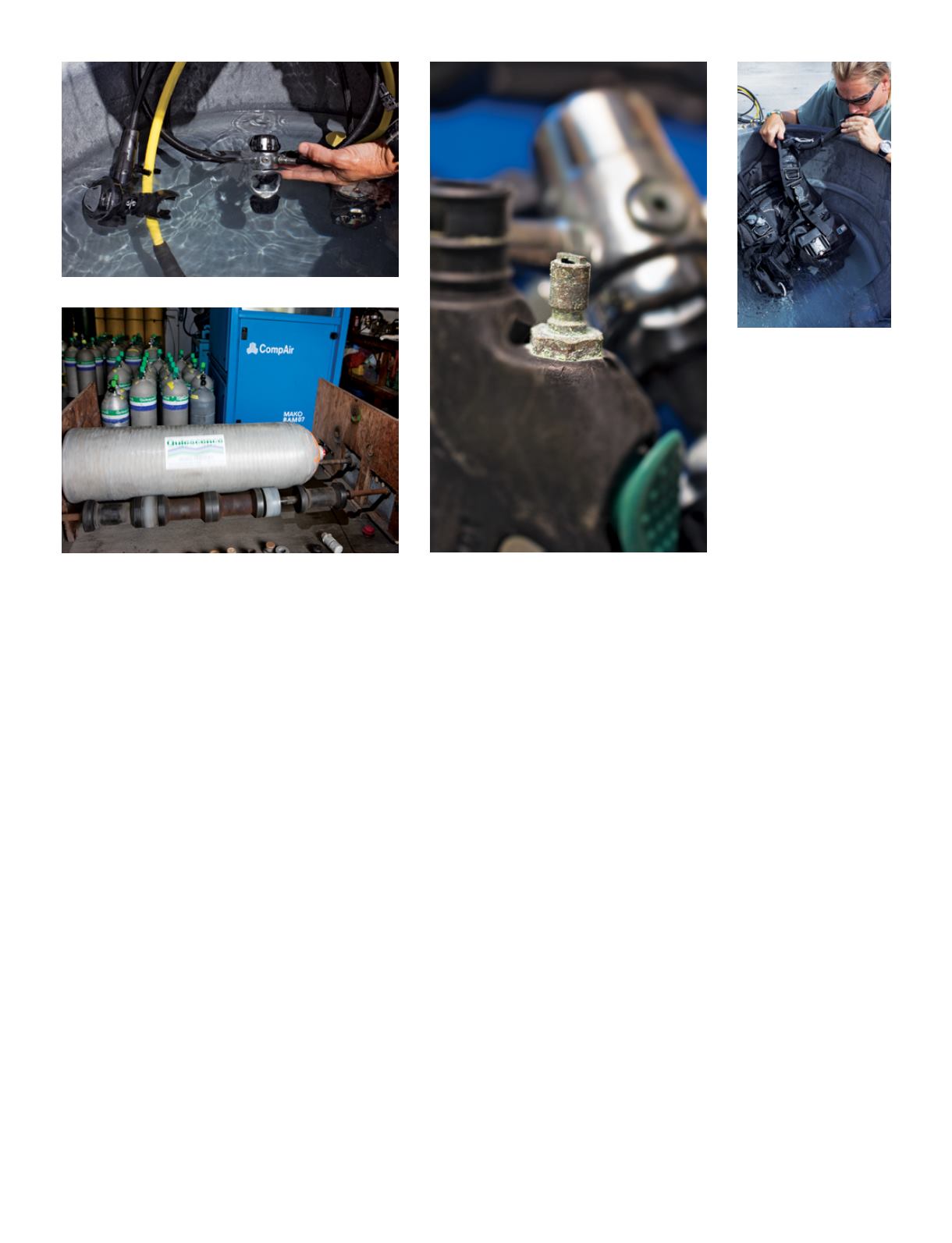
|
109
allow the fresh water to dissolve the salt in all the nooks and
crannies. If the system is pressurized, purge both second stages
several times while they’re submerged in clean fresh water to
promote removal of contaminants from their interiors. If it’s
not possible to soak the regulators while they’re connected to
a cylinder, make sure the dust cap is firmly in place so water is
prevented from entering the first stage. Also, take care to not
press the purge buttons as that can allow water to enter the
hoses and possibly reach the first stage.
Once the second stages are adequately soaked, shake off
any excess water and set them out to dry. If your second
stages are equipped with knobs for controlling breathing
resistance, turn them all the way out to decrease the spring
tension on the internal components. Once the regulator
assembly is completely dry, store it in a regulator bag to
keep dust, debris and pests away from your vital breathing
equipment. Follow the manufacturer’s recommendations on
how often to have your regulators serviced by a professional
technician — an annual overhaul is a good idea.
BCD
As with your regulators, test your BCD before diving to make
sure everything is working properly. When soaking your BCD
after diving, press down on the inflate and deflate buttons
while holding the BCD underwater to work out any trapped
salt, sand or debris that might be inside. Orally inflate the
jacket and, while it’s submerged, pull on each of the dump
valves to work out any debris that might be trapped around
them. Be sure to rinse out the inside of the BCD bladder —
sometimes salt water will enter in the process of deflating the
BCD while diving. Using a hose, introduce clean fresh water
into the bladder as you hold down the deflate button. Next,
fill it with air by mouth. Hold up the BCD and rotate it so the
fresh water sloshes around inside and coats all the interior
surfaces of the bladder. Hang the BCD on an appropriately
sturdy hanger and pull the lowest dump valve (or hold the
BCD upside down and press the deflate button) to allow
all the water to escape. Repeat until you are confident that
little or no water remains inside, and then partially inflate
the jacket for storage. Again, the manufacturer will provide a
recommendation on how often to have your BCD serviced;
dropping it off at your local dive shop every year with your
regulator assembly should ensure it works reliably.
Cylinder
Always handle pressurized cylinders carefully as they contain
a lot of potential energy. To prevent the incursion of water,
never drain a cylinder completely of gas. When rinsing your
cylinder after diving, thoroughly rinse around the valve, and
remove the tank boot regularly to prevent buildup of salt
or other debris. (For more about the care of high-pressure
cylinders, see “Tank Safety,” Alert Diver, Spring 2012.)
Remember to have your cylinder visually inspected every
year and hydrostatically tested every five years.
It doesn’t take much time or effort to ensure your life-
support equipment will work as intended. Proper care and
regular maintenance of your dive gear is an important way
to stack the deck in your favor.
AD
Don’t ever forget that your
dive gear is life-support
equipment. Keep it in good
working order by rinsing
it thoroughly at the end
of every day of diving,
inspecting it before and
after you dive, getting it
serviced regularly and
handling it with care.


